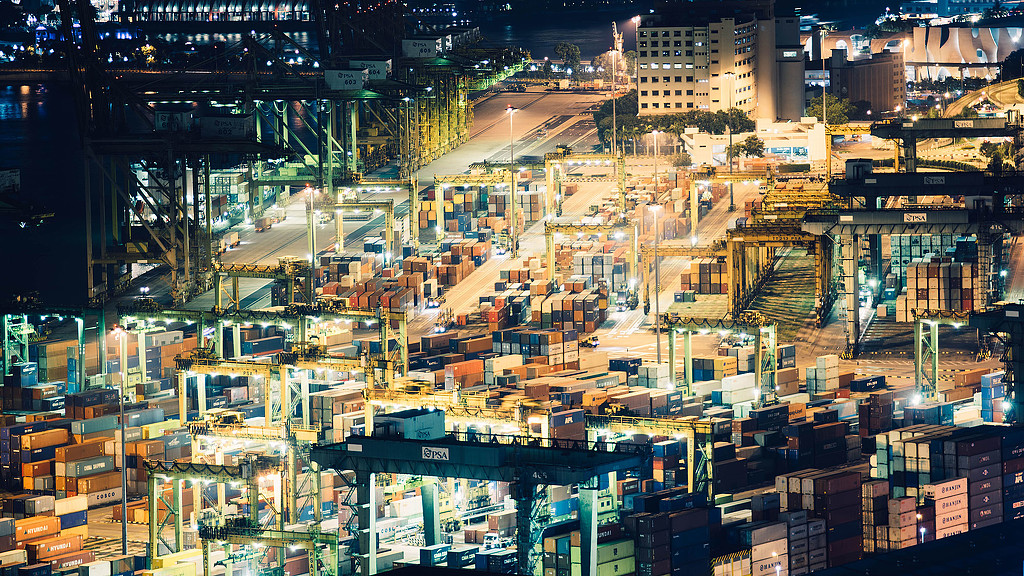As E-commerce Booms, Transportation Logistics Are Shifting to Meet Demand
October 12, 2020 | By Rick Ferrara, Brion Sargent
As customers increasingly expect same-day delivery of goods delivered to their homes, a massive surge in e-commerce has disrupted the global supply chain and transformed industrial transportation networks. To meet demand, companies are looking for a faster and more efficient way to ship goods to consumers.
While much of the attention has focused on the “last mile” — the final, and crucial step in delivery from the distribution center or warehouse facility to the end user — today, all transportation modes are being considered to compress costs and connect this growing network of facilities.
Intermodal transportation — a combination of two or more different shipping modes such as trucks, trains, ships, and aircraft to move freight to a final destination — could prove to be the most efficient and cost-effective solution. Rather than relying on a single mode of transport, companies are using an intermodal combination of sea, road, and railways to move goods on longer routes requiring fewer transfers. This offers significant cost savings for shippers, buyers, and other stakeholders in the supply chain, where distribution is one of the biggest costs.
Intermodal transportation offers an alternative to truckingThe four most efficient means to move goods from one place to another by cost are: pipeline (e.g., an oil pipeline), shipping (i.e., across oceans, lakes, or on rivers), railroads, and long-haul trucking. The logistics of bringing products to customers generally involves some combination of all of these modes. In the past, the retail consumer functioned as the last link in this final part of the trip, picking up the product from the store and taking it home. But today, more consumers expect doorstep delivery.
E-commerce relies heavily on the trucking industry in the form of long-haul transport, then regional and urban transfers, and then finally “the last mile,” which is usually completed with vans and app-based delivery services. The dramatic expansion of e-commerce, and with it, distribution and last mile logistics, has been noticeably affected by volatility in the trucking industry.
After a decline last year on spending for trucking due to increased tariffs, unpredictability regarding trade with China, and new regulations, the total amount shippers spend on freight by truck and rail, and barge and air, is back on the upswing, according to the Cass Freight Expenditure Index. This spending is a function of price and volume, which has surged because of social distancing and a greater demand for e-commerce. As a result, long-haul trucking capacity is being stretched thin.
An increase in the number of road freight carriers is leading to greater traffic congestion and costly delays in the delivery of goods to end-users in business and consumer markets. However, intermodal infrastructures are improving, along with other advances in technology for managing complex supply chains that operate across various modes of transportation.
The rise of intermodal facilitiesHow can companies get goods to consumers faster and more efficiently when trucking capacity is limited? Surprisingly, the rail industry might just have the answer. Over the last year, the rail industry has been improving operations by implementing precision scheduled railroading (PSR). Contrary to conventional belief, conventional trains move freight only when they are sufficiently full, but under PSR, trains move at a set time whether the freight or cars are in the yard. The goal of PSR is to enable longer trains (partially loaded cars), faster speeds, and less time spent in terminals. This scheduling model is the same model used for years with air-based shipping, and while not innovative in and of itself, when applied to rail it stands to revolutionize how rail is utilized in the U.S.
Over the last few years, rail shipping companies have been expanding and making infrastructure improvements to increase efficiency. In 2020 alone, one company plans to spend $760 million to this end.
The expansion and improvement of rail infrastructure could have major implications for intermodal facilities — the industrial real estate locations where rail, road, and shipping converge. “The growth of intermodal freight transport provides new opportunity for industrial real estate investors and developers, who can build industrial distribution parks that cater to intermodal freight transport by attracting the right mix of distribution centers, warehouses, and manufacturing plants,” says Aaron Ahlburn, practice lead for Logistics & Industrial Data at Avison Young.
Intermodal rail companies have been buying up and redeveloping abandoned rail rights-of-way to reestablish routes to legacy distribution centers that are currently languishing within cities, to push their services back into city centers closer to the customer and end user. These properties are likely to be low cost, underutilized, and generally still furnished with abundant electrical power. As brick-and-mortar retail is in regression, demand for industrial warehouse and distribution space is experiencing an upswing.
As we see a greater need for these types of properties to be converted to last mile distribution and delivery stations where goods can make that final trip to your front porch, we are constantly evaluating and renovating sites along rights-of-way for our clients to purchase and redevelop. We strive to make available sites into viable sites. In so doing, we can ensure they continue meeting consumer demand in an efficient and reliable manner.
For media inquiries, email .

